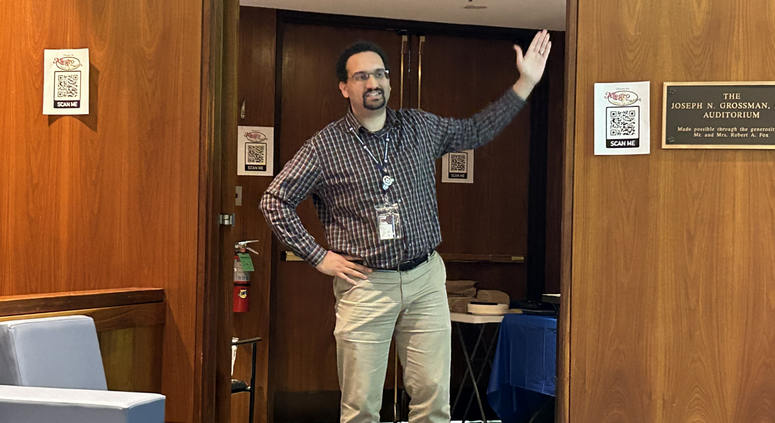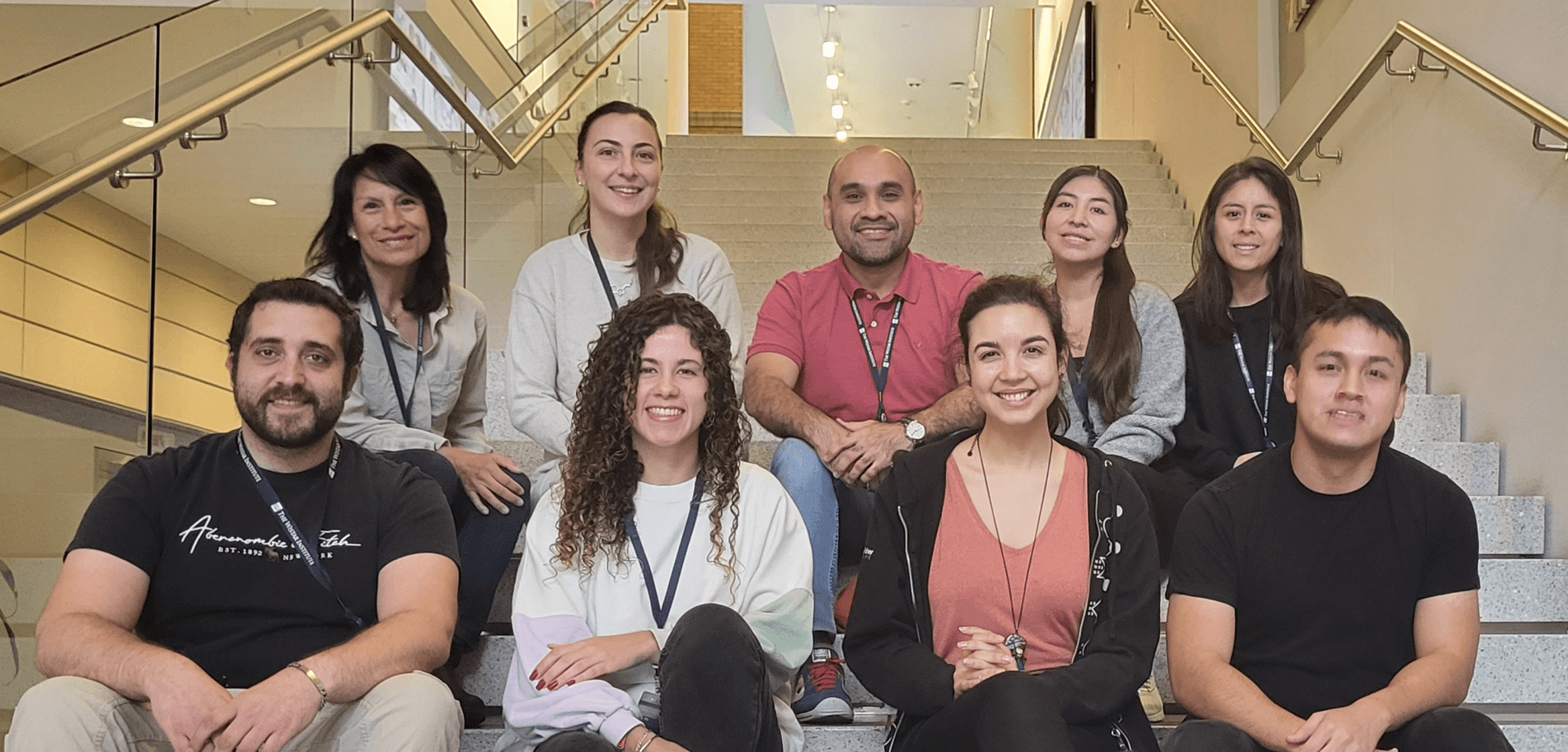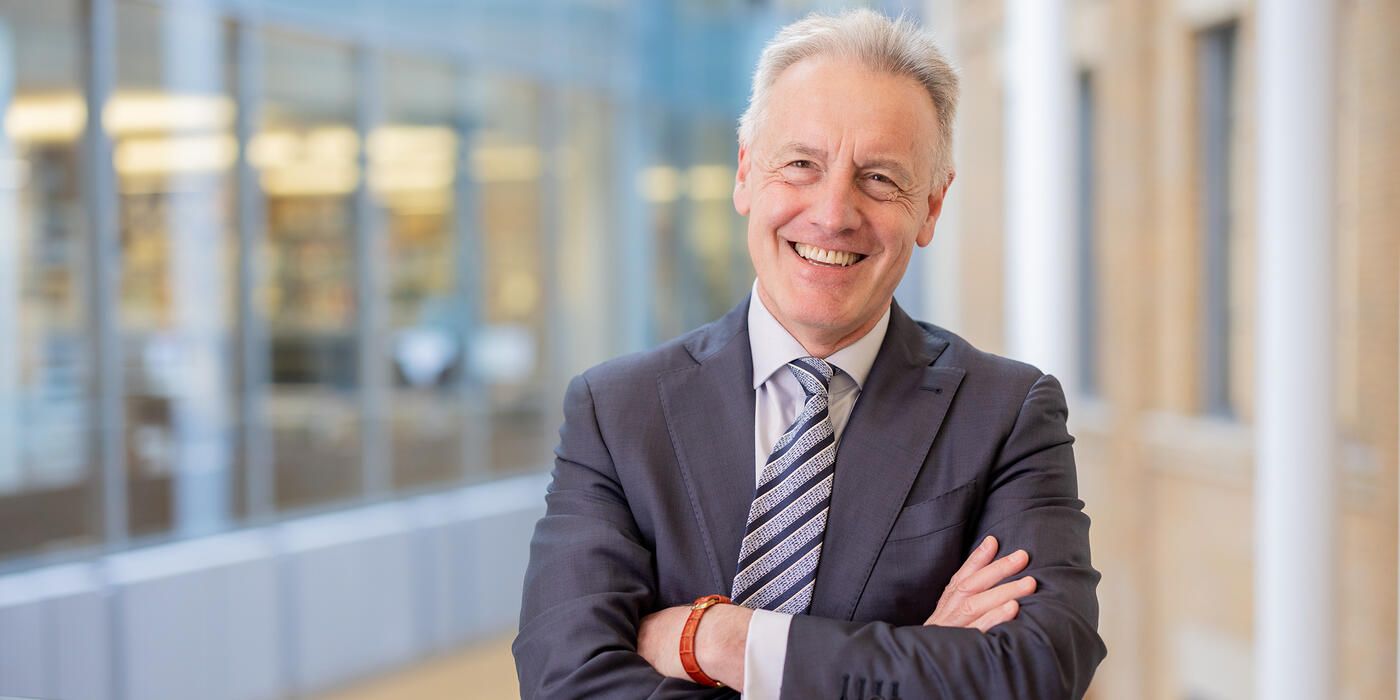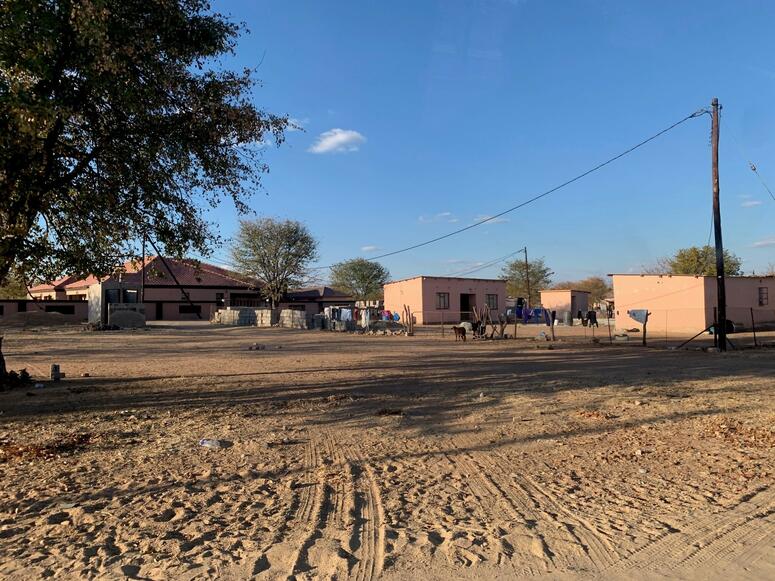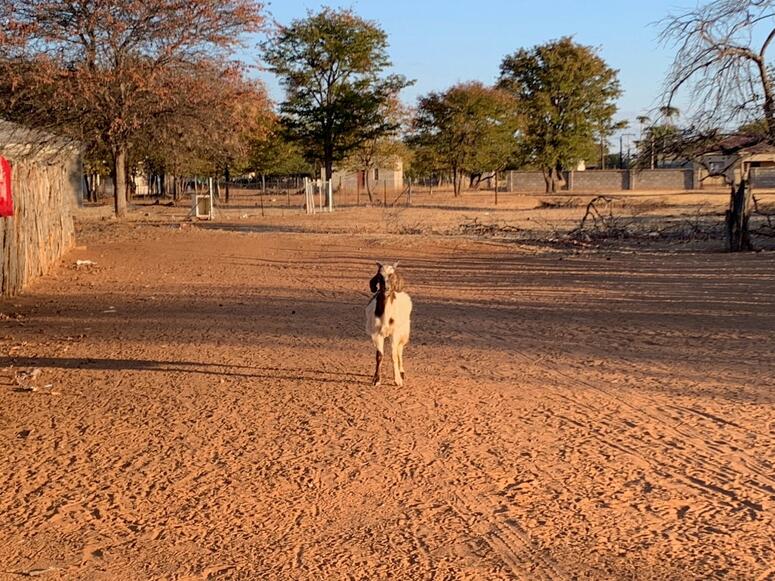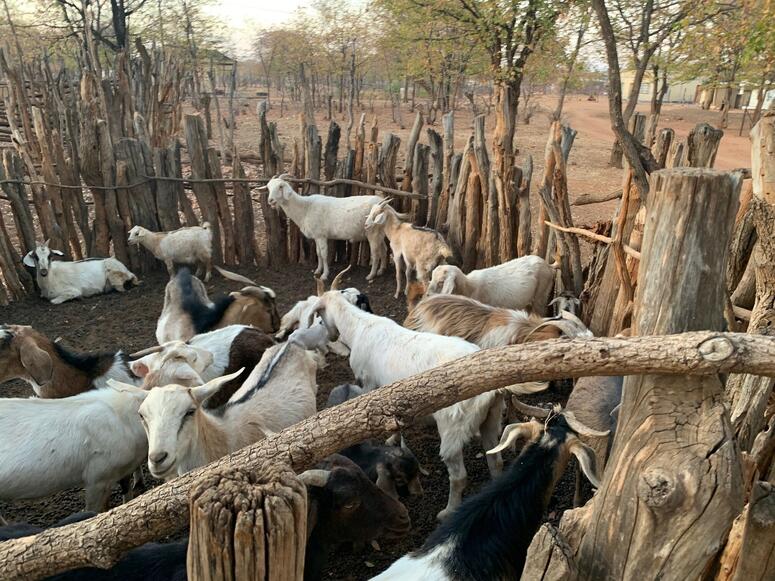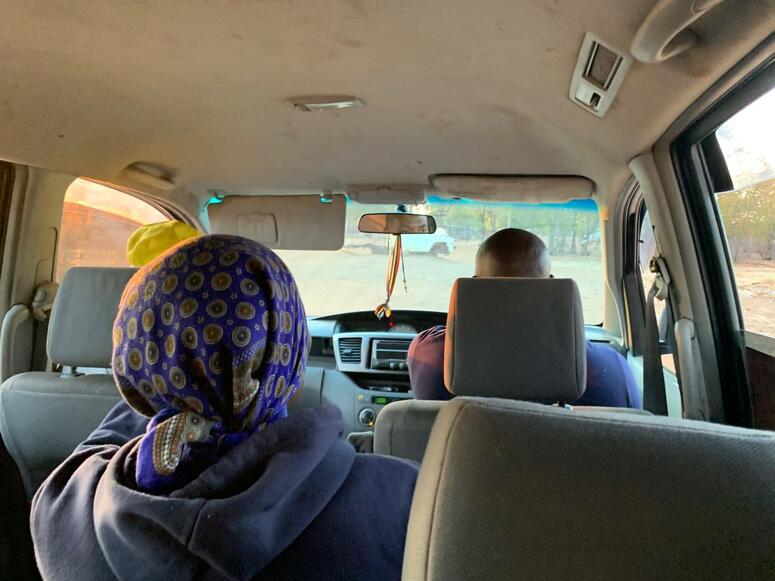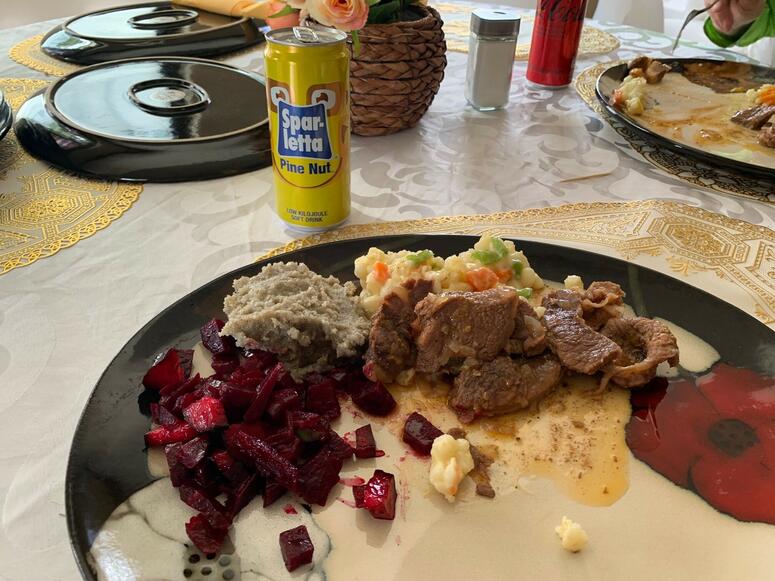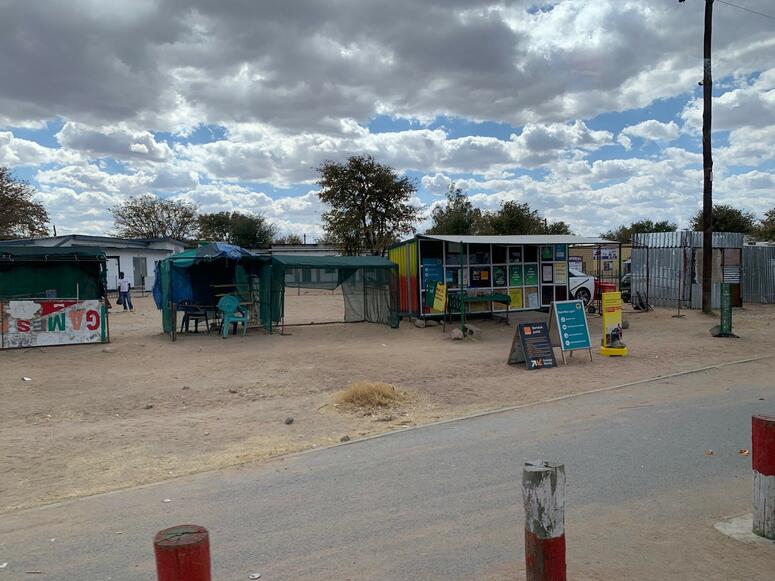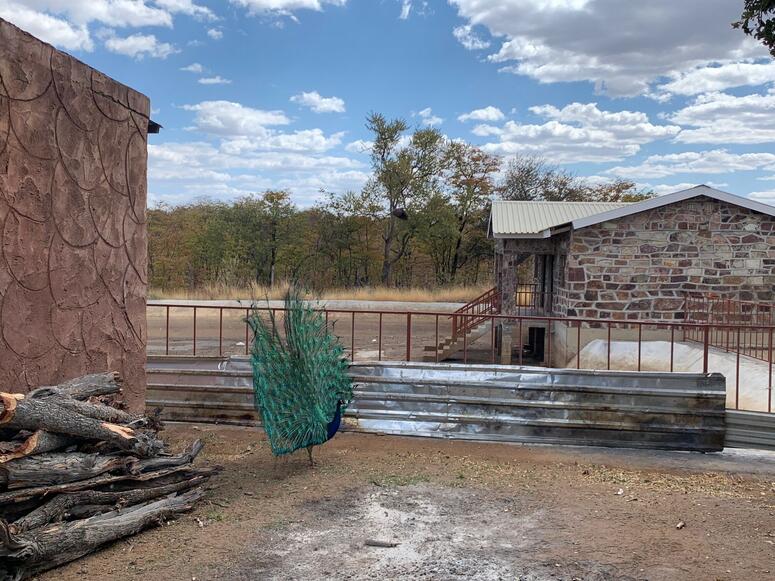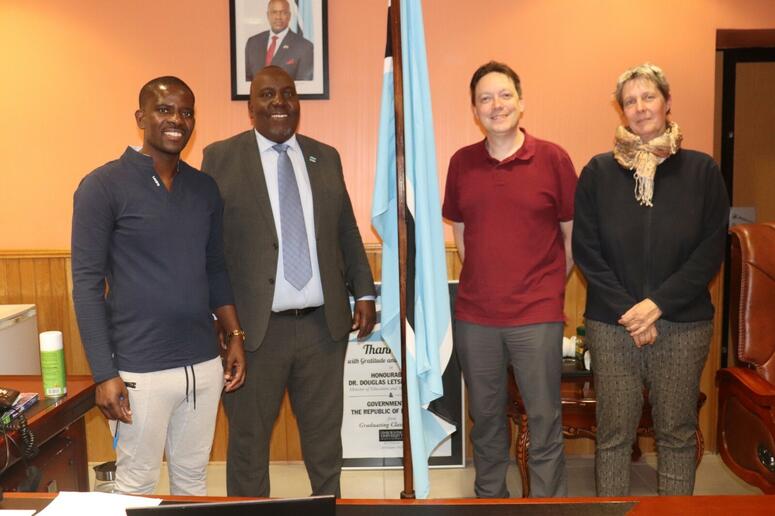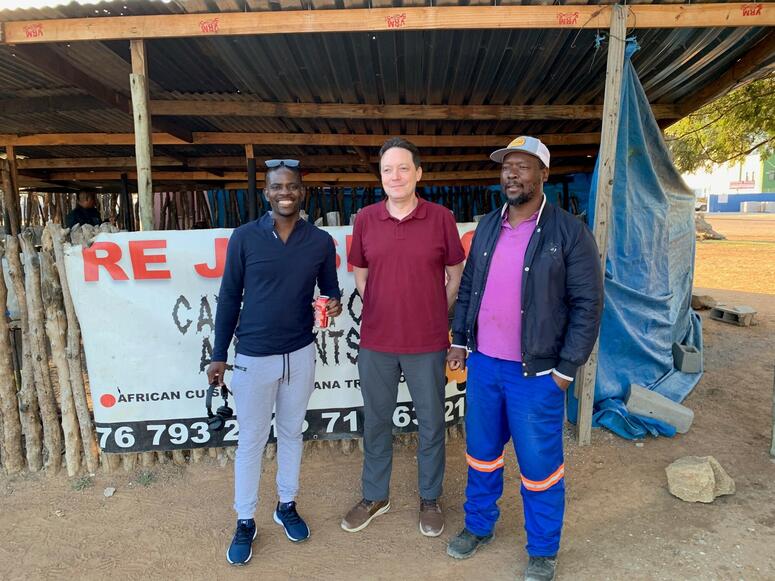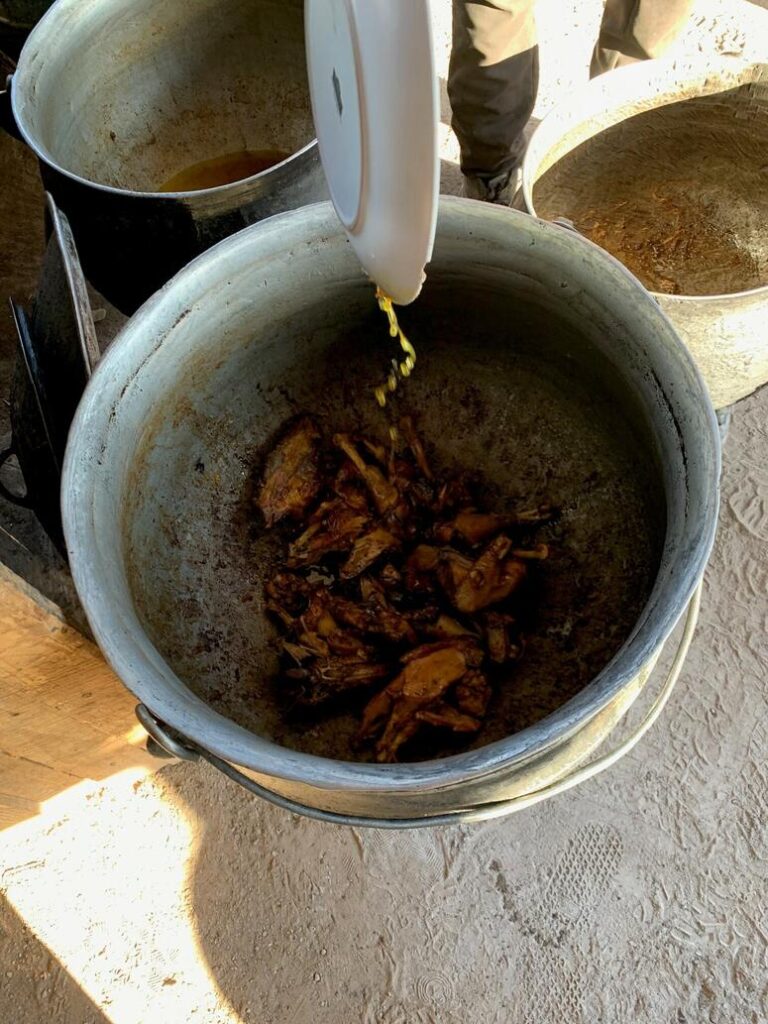“If you want to make sure that you’re creative and innovative, you need to have a big table and people at it with a lot of different perspectives,” said Marie A. Bernard, M.D., NIH Chief Officer for Scientific Diversity, during Wistar’s Diversity in Science Series. “Traditionally, science academia has been very pyramidal, you get to the peak where there’s only a small number of people, but you need those other perspectives. If you don’t have those diverse minds at the table, you’re missing out on talent. If we are going to maintain our leadership role in biomedical research across the globe, we need to take advantage of all that talent.”
In honor of Hispanic Heritage Month, we are sharing the narratives, perspectives, and points of view of five dynamic scientists living in Philadelphia with cultural roots in South America and Spain. Angela Rios Angula (in the Chen lab), Segundo Del Aguila (in the Villanueva lab) and Rocio Inga (in the Villanueva lab) are from Peru. Marta Tarquis Medina (in the Escolano lab) is from Spain. And Maria Belen Palacio (in the Escolano lab) is from Argentina.
Together, they discussed the initial spark that put them on a path to science; the journey of building community and dynamic careers; and connecting with others through celebrating the vast and varied experiences of Hispanic people from different backgrounds.
Snapshots of the Beginning Scientist
Segundo Del Aguila: My high school biology teacher was a scientist. What I mean is she thought and asked questions like a scientist—she was pragmatic. I liked the way she thought about and viewed everyday problems, but especially how she arrived at the ideal question that got to the heart of a problem. She was a biologist, and because of my interest in understanding life, I decided to take that route too.
In Peru’s capital city of Lima, I knew of three big universities that had biology programs, and I managed to get a scholarship to the best one in research—Cayetano Heredia Peruvian University. I remember that, during the application process, you could write down five different career tracks, but I put only one: biology. The academic advisor told me I had blank spaces and should fill out more, but I knew it was only biology for me.
Angela Rios Angula: When I was young, I was very shy but also very curious. Plants made me wonder how, why and where do they grow? That led me to understand how bacteria survive, and that led me to the human body. Because of this curiosity and passion, I decided to become a scientist; I knew I was not going to give up on whatever I started.
Rocio Inga: I’m from the same university as Angela and Segundo. Our university has only biomedical careers, so it’s very specialized. It is connected to a big hospital and other biomedical research institutes, so we could start learning in the lab early on, within a nurturing scientific environment.
I too was curious as a kid—always looking at bugs and plants and wondering about how they work. My father is a chemical engineer, and he told me about biochemistry as a career, and I’m glad I followed his advice. While taking courses at the university, it was the molecular biology course that really made me passionate. I’ve been fortunate to have many different science career experiences; I’ve worked many years on the molecular biology of Leishmania parasites, worked with cancer cells, worked at different research institutes, and taught at university.
Marta Tarquis Medina: I was super interested in medicine and health care when I was young but knew being a doctor was stressful and demanding. My school had a mini laboratory and good mentors, and I realized I liked being in a laboratory and could have a career in science. I got my bachelor’s degree in biology, left Spain to get my master’s in Germany, and left Germany with a Ph.D. in diabetes.
Belen Palacio: My journey doesn’t go back that far. My high school principal invited a German friend to give a talk about his chemical engineering career working in nanomaterials. I asked what I needed to study to obtain a similar career. But in college, I didn’t like chemistry much, but I did like biology. I tracked into biotechnology and pursued a Ph.D. in developmental biology.
When I was looking for a postdoctoral fellow position, I knew one thing for sure: I wanted my work to mean something to society. I don’t research for the pleasure of research. There must be a greater purpose.
Finding Community
Rocio: We don’t celebrate specific themes, but we celebrate together. We watched the World Cup, we celebrated Peruvian Independence on July 28. We connect over lunch and coffee. We bring back sweets and desserts from our trips home to share with everyone in the lab.
Belen: I’m very family-oriented, so it’s been hard for me. I came abroad and left my whole family in Argentina. The first few months were shocking because I missed my family, my friends and my routine. So, being new to the U.S. and Philadelphia, you must find a new routine. You go out and try to find your people, but you need to build a new community.
Marta: A new scientist comes to Wistar and we ask them, “Do you speak Spanish? Come meet us.” Then Rocio gathers us all together! Rocio, you bring everyone together.
Rocio: Yes, I always liked to gather people together especially those who have recently arrived at Wistar. It’s a chance for them to meet and make new friends. And if they need help with anything, we can help.
Biomedical Role Models
Belen: I didn’t have a role model during my Ph.D. When I came to Wistar and met Amelia, I was stunned how a person can influence your science so much and how they can help you become a better scientist. In Germany during my postdoctoral training, my PI wasn’t around much, and it seemed like I was just carrying out tasks. I had completely lost my passion and almost gave up on science. Then I came to Wistar, and Amelia showed me a new and completely different science panorama. She is encouraging at every step and pushes you in a positive way to become your best version.
Segundo: Jessie is a great mentor. She is my role model, and I am on a similar path to science as she was. We came to the U.S. after studying at the same university. She started as a research assistant and then applied for a Ph.D. program, which is exactly what I’m planning to do. Even though I don’t have a Ph.D., I’m trying to learn and mature as a student would in a Ph.D. program. I will try to be an inspiration for others starting out in scientific careers.
Diversity Matters
Belen: For the next generation of Hispanic scientists, they need to build the foundations of their scientific path. I ended up in immunology, but I didn’t study immunology. When I was getting my Ph.D., I had to learn why I was doing each experiment because if something went wrong, you had to fix it. I knew exactly what each product was and each step in an experiment. I made things from scratch. In my lab, it was not an option to buy a kit or fancy equipment. Here in the U.S., you can buy a kit and in four days you have the result, but do you understand what each step means to your sample or to what you’re doing?
Marta: Regarding science funding in Spain, it’s my view that we must learn to solve problems in a different way. We must think outside the box because we may not have the money to buy the equipment or supplies for an experiment. So we must get to the same conclusion, through a different approach. I think people that come from poorer countries have an out-of-the-box thinking that enriches the lab.
Belen: Try doing science in a developing country. There are many things scientists in the U.S. take for granted because of the technology here. For example, it would take me a year to get an antibody from the U.S. to arrive to Argentina because of customs. This forces us to fully understand the methods of an experiment. In my lab in Argentina, if something doesn’t work, you can’t get a new one or try it again. When you don’t have extra funds, you really think deeply about the protocols and how you will conduct an experiment. You only have one try. Make sure you can accomplish what is important.
Rocio: It’s good to have scientists from different backgrounds, with different ways of seeing things, using different approaches in science. I think that’s the beauty of science: to come together from differences and approach the same problem. And even the youngest people in the lab may think they can’t contribute yet, but even their questions and ideas help to solve a scientific problem.


